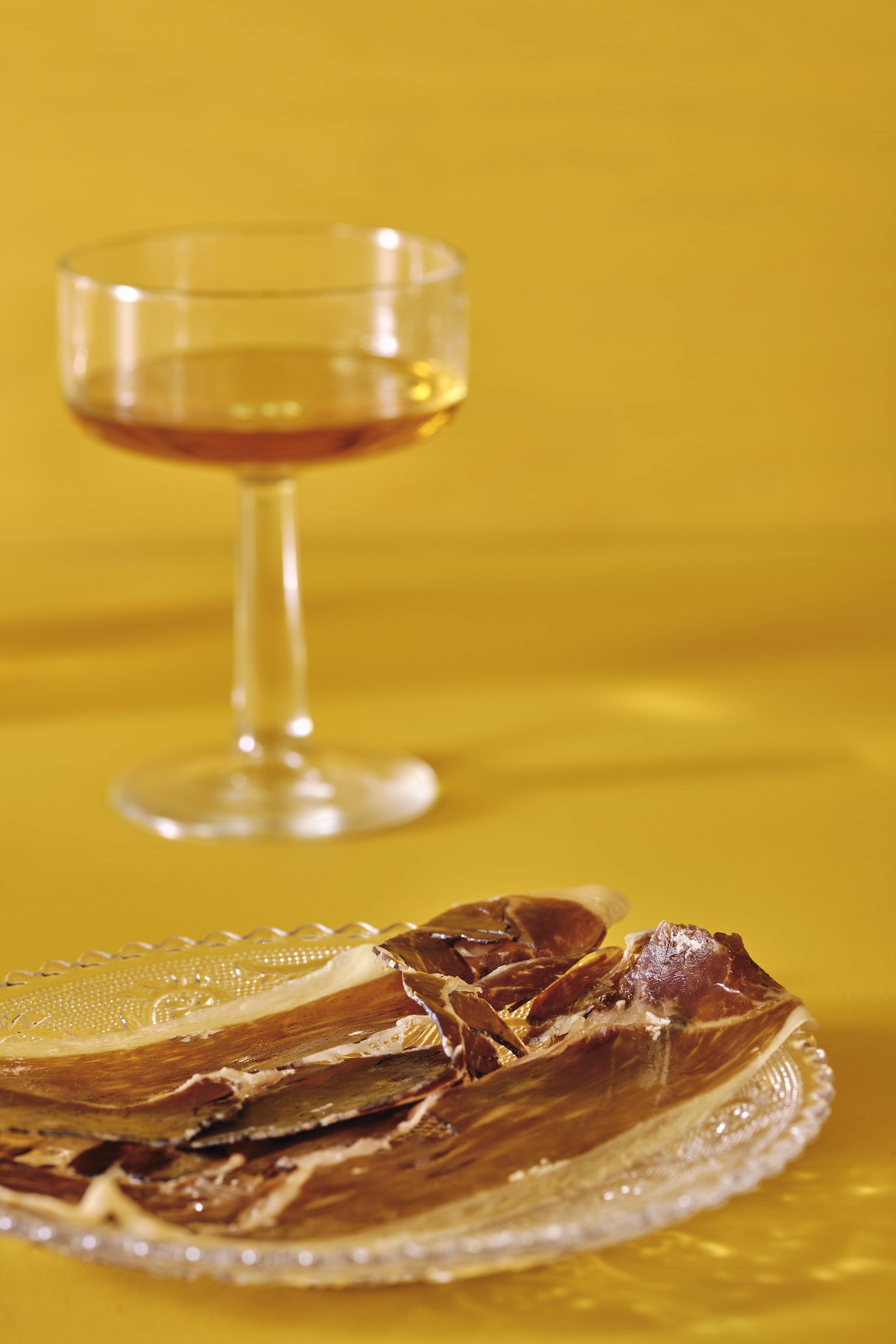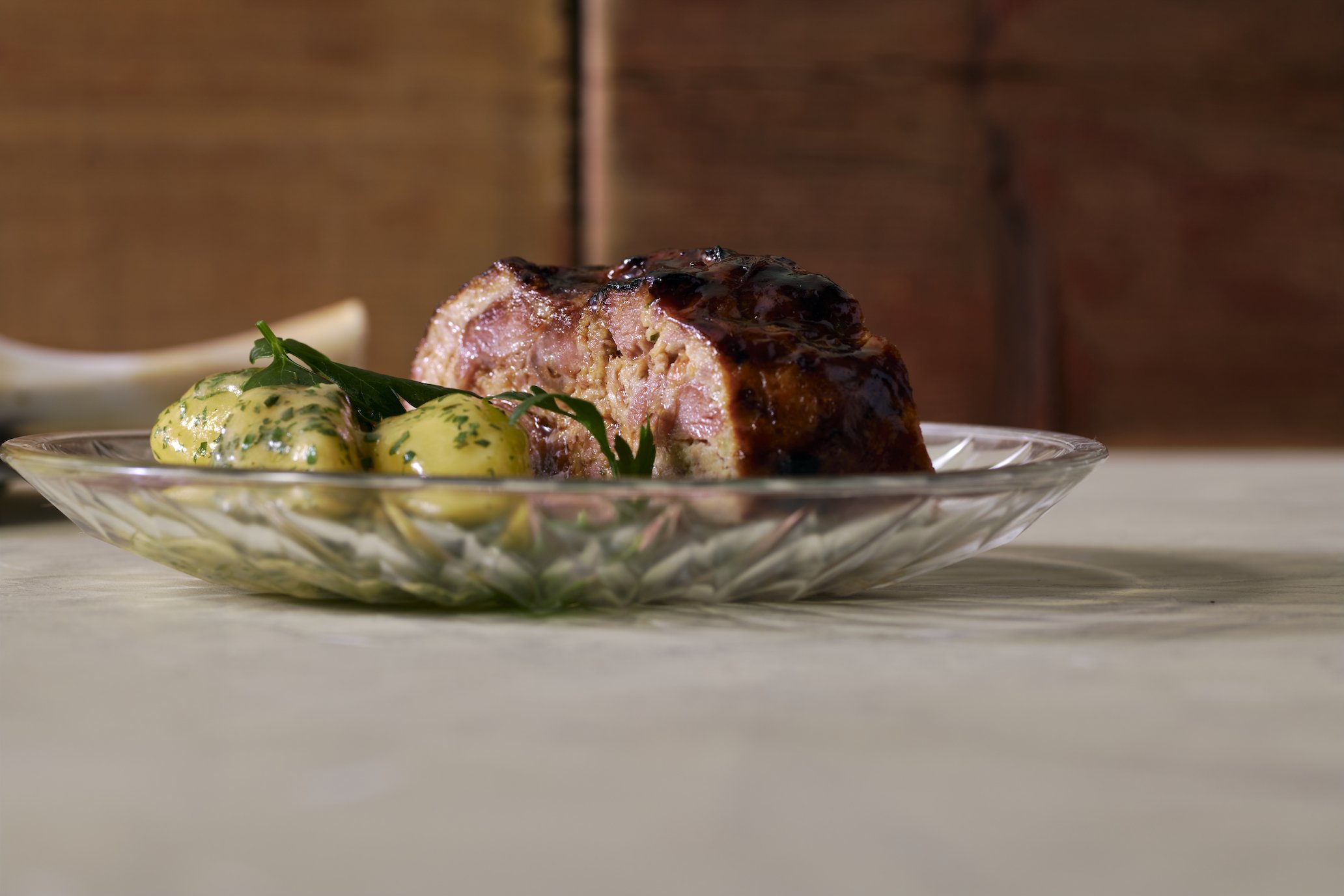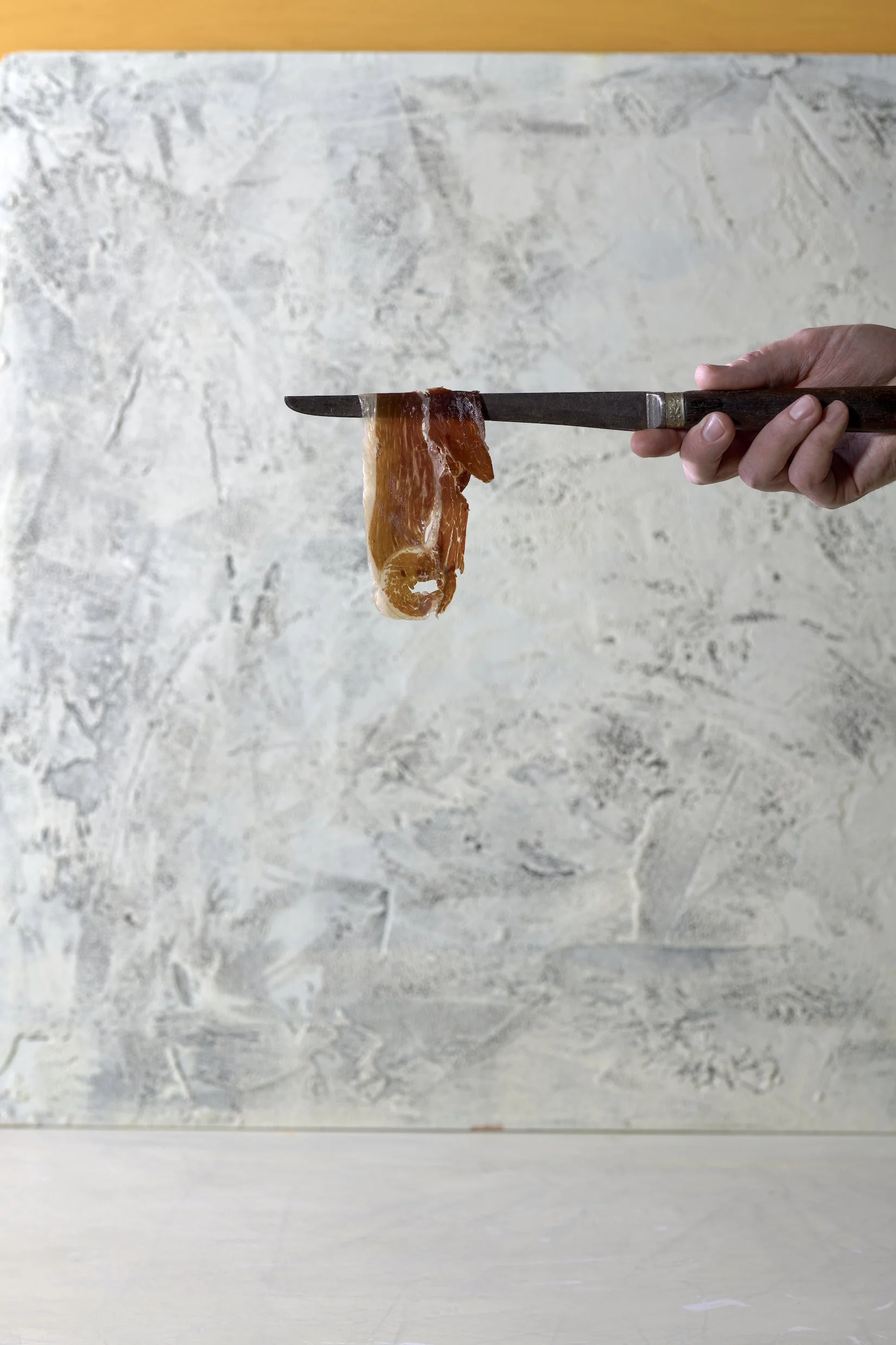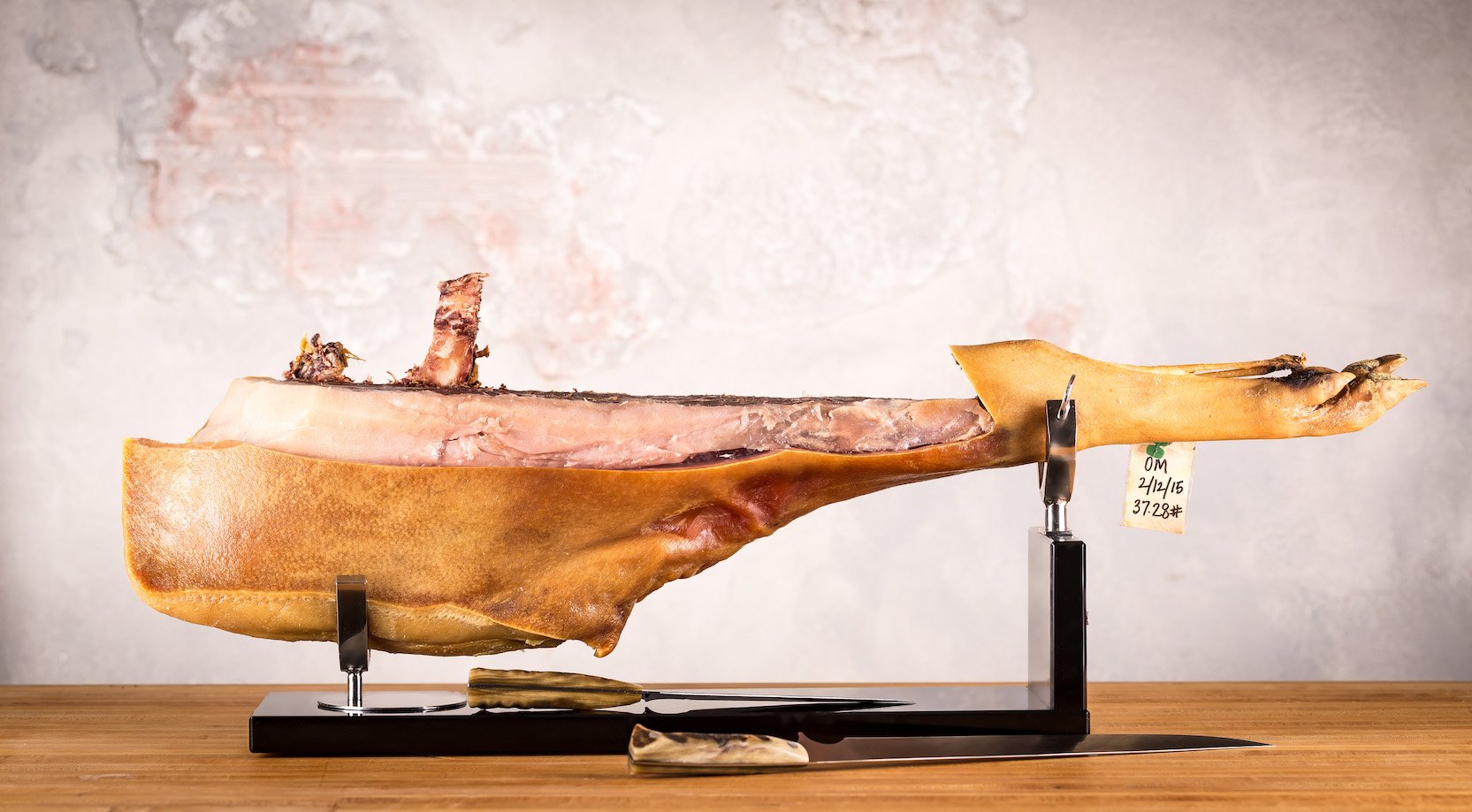HAM edition
We love Ham! Join us as we dig into French, Spanish and American styles. Explore the traditions, recipes and stories below and in our journal.
Leave the Christmas ham at your Grandma’s house (sorry, Pat). Now think more European. Yes, that ham. For many Americans, when we think of thinly sliced cured ham we think “prosciutto”. That’s just the Italian word for cured ham. In Spain: jamon. France: jambon. The US: country ham.
There’s so many types of ham, and most cultures who eat pork have similar ways of curing it. To keep it simple, we’re focusing on just three styles for this theme .
Here are some FAQs of ham and why it’s so special (and expensive).
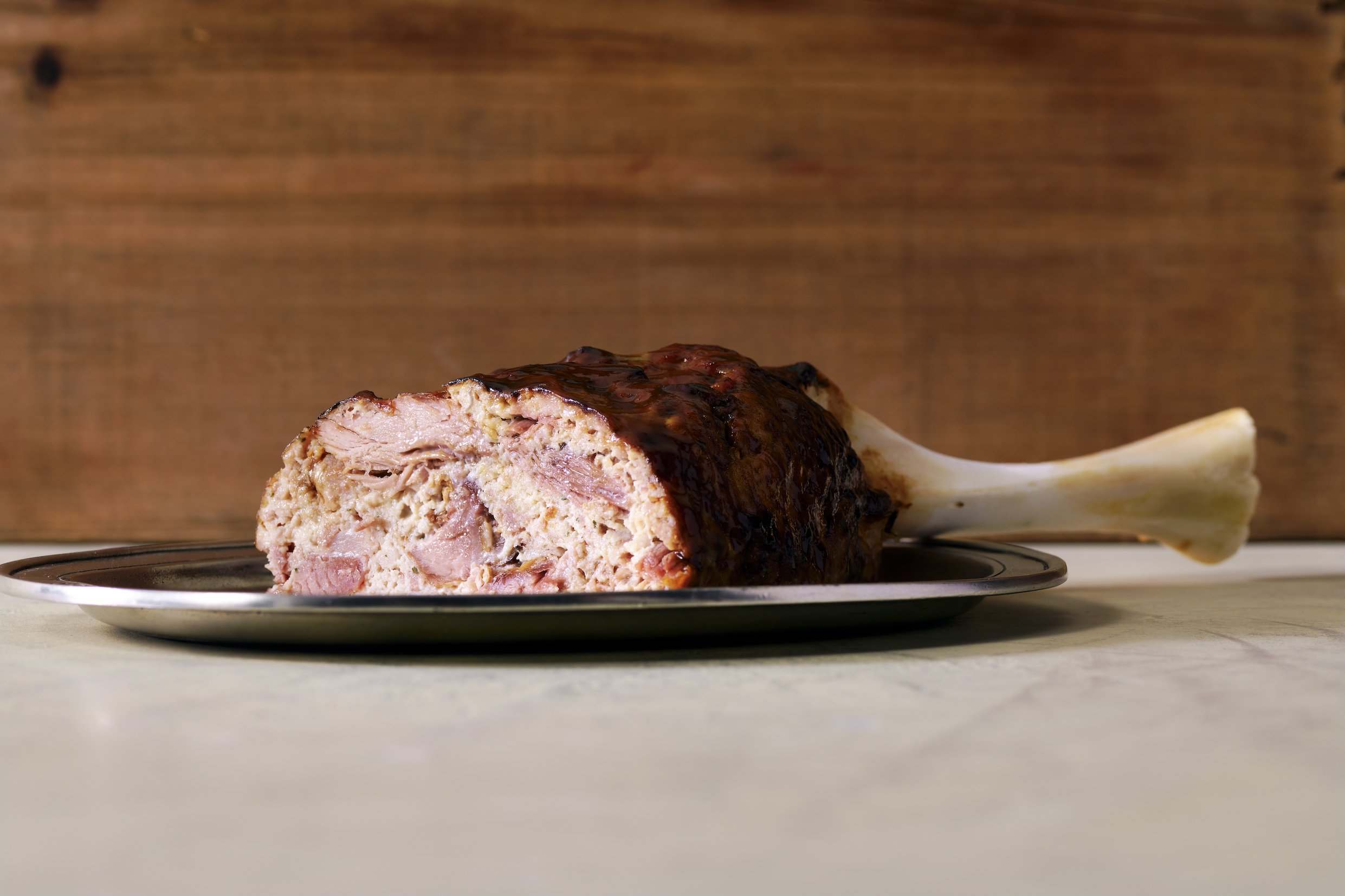
Jamon/Jambon/Ham
Spain
Jamon Serrano & Jamon Iberico
Some of the most sought-after ham in the world comes from Spain.
Jamon Serrano comes from all over Spain. It must be produced according to very specific guidelines, such as fat content and aging time. Like any cured ham it must be covered in salt for several weeks, then hung to age, in this case for a year.
Jamon Iberico is even more closely regulated. This ham is considered by some to be the finest in the world. It can only come from Iberico pigs. This heritage breed can only be raised for Jamon Iberico on a unique grassland environment known as the Dehesa. The free-ranging and foraging lifestyle of these pigs create an incredible flavor in the ham they produce. Jamon Iberico is also aged for at least twice as long as most other cured hams, which even further develops the flavor of an already incredibly delicious product. Jamon is almost always eaten raw but can be found as an addition to Spanish croquettas.
France
Jambon de Bayonne & Jambon de Paris
Jambon de Bayonne is France’s most popular cured ham. It must be produced in Basque Country or Gascony. It is produced by curing in salt and hanging, like Jamon. Unique to Jambon de Bayonne is a partial covering of the ham by a mixture of flour and lard. This slows the moisture loss in the ham and makes for a more luscious and complex final product. Sometimes Espellette pepper is also added to the ham. Jambon de Bayonne is, like all cured hams, best enjoyed raw.
Jambon de Paris is not a dry-cured ham, but deserves a mention. It is wet-brined and poached in water with a bundle of aromatic herbs called bouquet-garni. This is the ham of choice for two of France’s greatest sandwiches: the Jambon Beurre and the Croque Monsieur.
Which Part of the Pig is Ham?
Ham comes from the rear legs of the pig. It is cured with salt and other spices and hung to dry for a certain period of time, depending on the style of ham.
The Names? Is There a Difference?
Oh yes, and it’s a little convoluted. Basically, this boils down to the breed of the pig, the region where both the pig was raised and where the ham is made, and/or how it’s cured - similar to wine. Europeans are proud of their product and know how to protect it; they’ve created Protected Designation of Origin (PDO) or Protected Geographical Indication (PGI). Not everyone can produce Champagne, say, even if they have the same grape variety. It’s the nuances of the environment in addition to the breed that give the ham its specific flavor.
To give a quick run-down:
Mangalitsa is a breed of pig from Hungary with curly white hair (they look like sheep!) and very marbled meat.
Bayonne can be a variety of 8 different breeds as long as it’s produced under strict regulations in a specific area in France. One regulation is it has to be cured with the salt from the Salies-de-Bearn estuary.
Iberico is the breed of pig and has to be pure bred or at least 50% Iberico. For it to be Iberico de Bellota (the highest grade of Spanish ham), they need to be free-range pigs that roam the oak forests in a designated area along the border of Spain and Portugal. The pigs only eat acorns (bellota) during the last few months of their life.
Serrano can be a variety of selected breeds and basically is the umbrella term for cured ham made in Spain that’s not Iberico.
Duroc is a breed of pig from the United States - and fun fact! - is the only pig that is allowed to breed with Ibericos.

